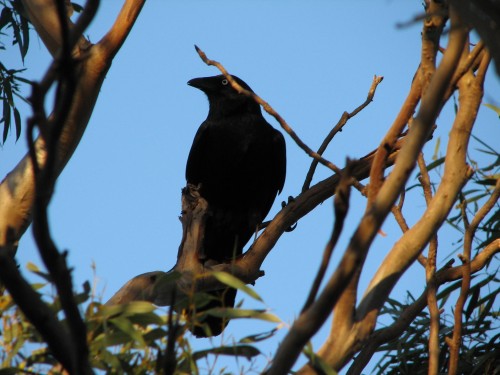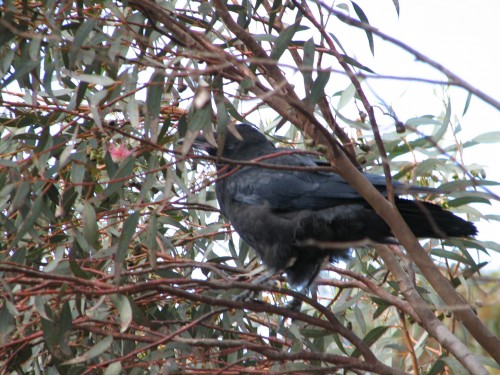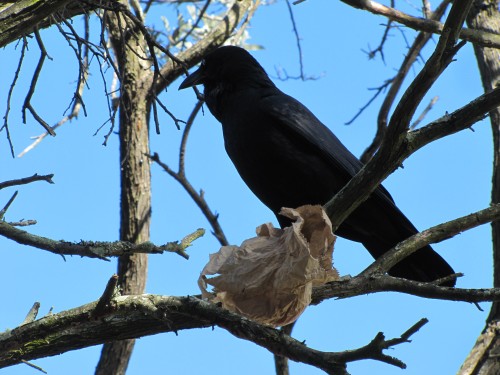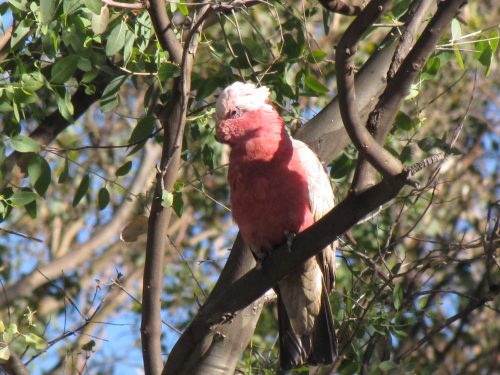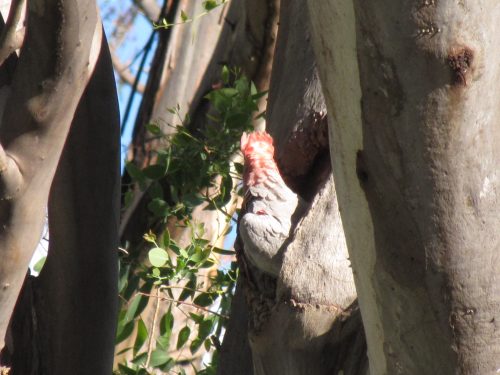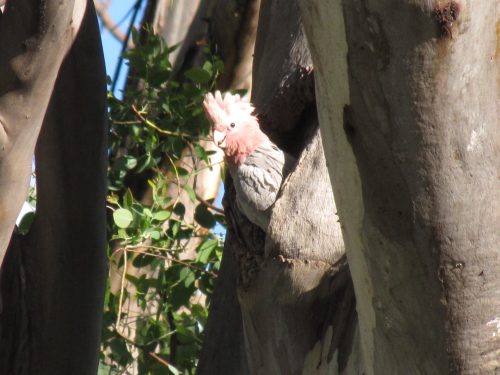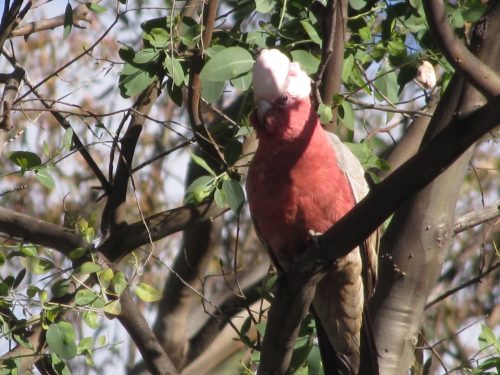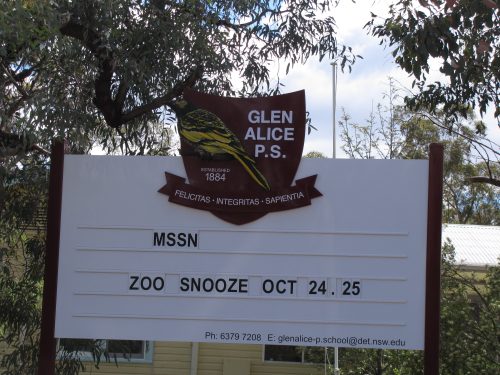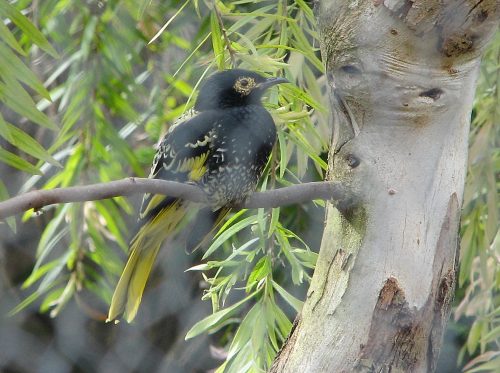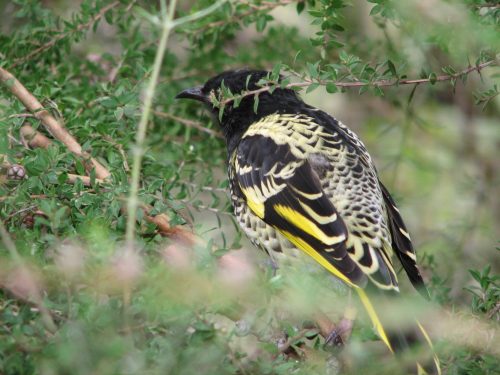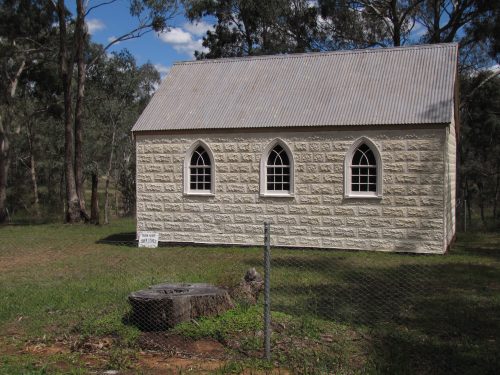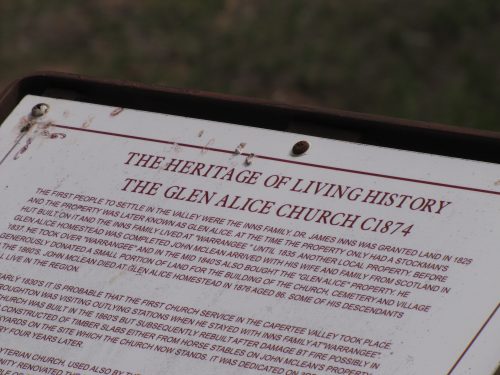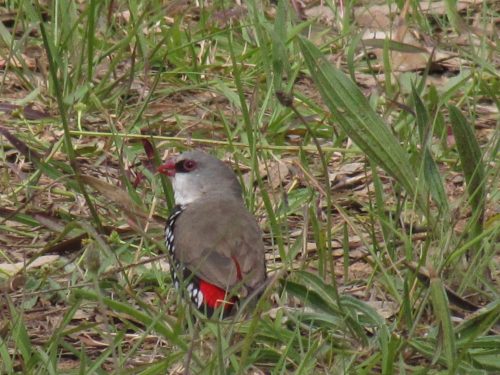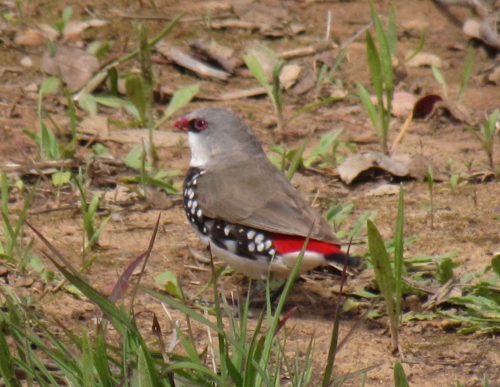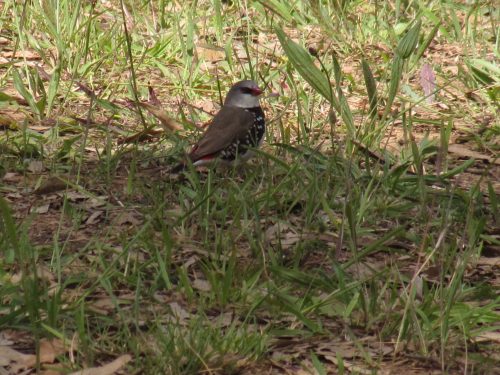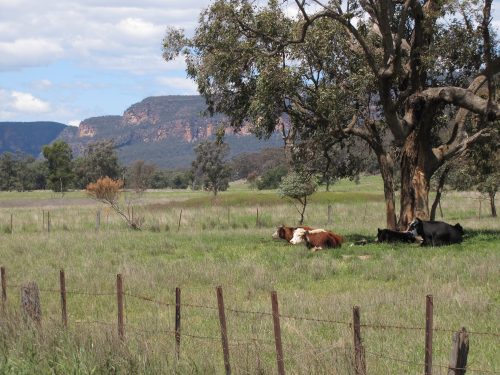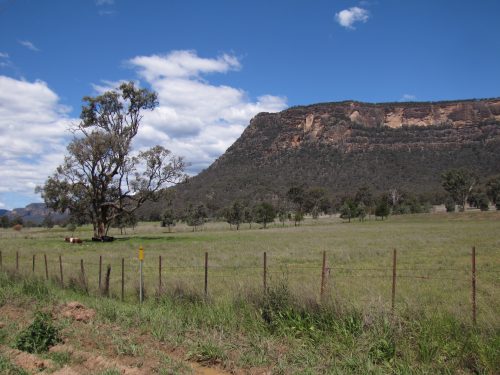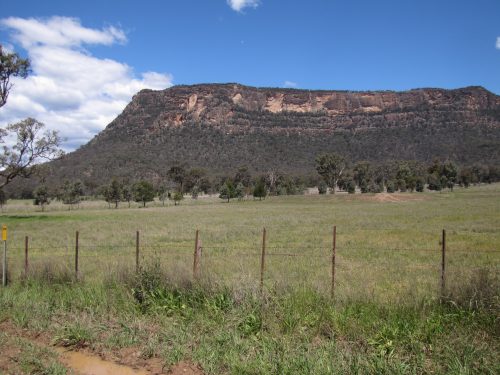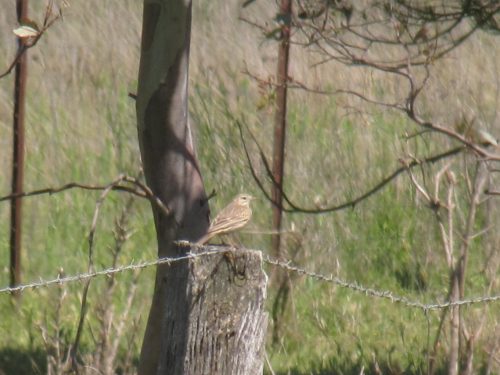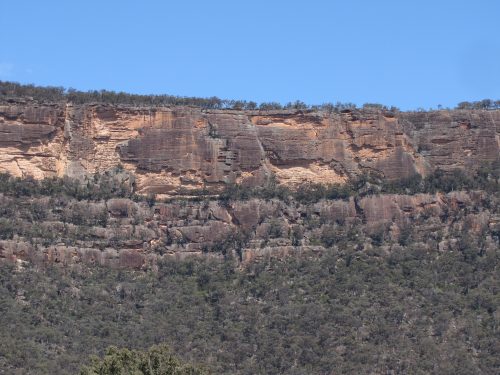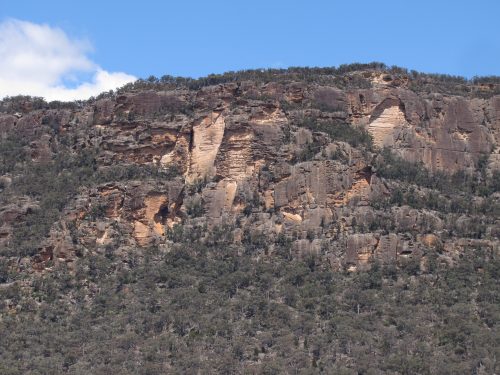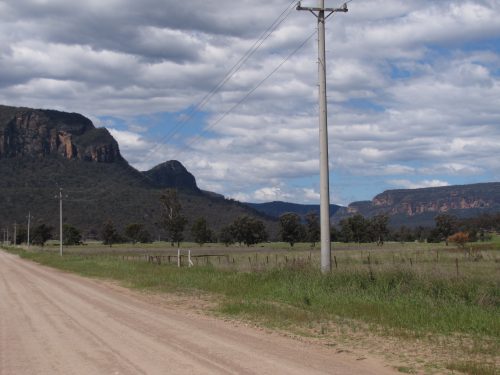Annoyingly noisy ravens around our house
Over the last few weeks, I have been intrigued, puzzled and just a little annoyed.
Intrigued
I have been intrigued by all of the Little Ravens in our garden, on our five-acre property and along the nearby roadsides. While we only ever have two to five ravens at a time on our block of land, there would have to be at least 50 to 80 in the locality, perhaps more than that within a kilometre of our house. Obviously, there is plenty of food for them, as well as plenty of nesting sites. There is quite an extensive mallee scrub a few hundred metres just to the west of us.
Puzzled
I am puzzled because I am not sure what they are up to at present. Almost every morning this year I have heard large numbers of the local ravens constantly calling. It is usually from just after first light at around 6:30 am up until around 9 am and sometimes a little later. After that, there is just the occasional call as one or two fly overhead, or when they land in one of our trees. I have no idea why they are all calling, or why it stops after a while.
Annoyed
I have also been annoyed with the local Little Ravens, not only because I am puzzled by this behaviour, but it can get a little tedious after an hour or so of this calling, calling, calling. Normally, bird calls do not easily annoy me, though I will concede that if we had 500 Little Corellas wake us up every morning I would definitely change my mind. Thankfully that does not happen, though the local flocks of Galahs can sometimes be rather raucous, though they tend to fly overhead at sunset rather than at dawn.
Dilemma
I, therefore, have something of a dilemma. What are they doing? Why are they calling so incessantly?
I guess I will never know – unless I do an intensive field survey over many weeks in the field when I’d rather be in bed, or reading the paper.
I guess I could always try to learn how to speak Raven.
Good birding,
Trevor
Further reading:
What are these Galahs up to?
On our return trip from Sydney last year, we didn’t take the direct route home to Murray Bridge. Instead of taking two days to get home, we took a circuitous route through north-western New South Wales. We drove through Lithgow, Capertee Valley, Mudgee, Dunedoo, Cobar and Broken Hill. We saw some parts of the country we had never visited before, which is always an interesting way to travel.
On our first night away from Sydney, we stopped at one of the caravan parks in the town of Mudgee. We arrived late in the afternoon. After we had unpacked and settled into the cabin, we sat on the front deck of the cabin enjoying the balmy evening and a nice cuppa. As we were sitting there I had my notebook and binoculars at the ready, as well as my camera. My attention was soon drawn to a Galah perched in a nearby tree. This tree was about 30 metres from where we sat.
I noticed that the Galah was not attempting to fly away, but it was interested in what was happening further down the trunk. Another Galah, presumably its female mate, had emerged from a hollow there (see photos below). It looked as if the female was preparing the hollow ready for nesting. This was last Septemeber, right about the time they begin preparing nesting hollows for their next brood. I have no evidence that this pair went ahead and had a brood of young because we moved on elsewhere next morning.
The Galah is one of Australia’s most recognisable parrots. We have many colourful parrots in Australia – you can see photos of some of them by doing a search on this site. I have written frequently about parrots over the years and have included many photos of them. Some of these posts are included in “Further Reading” below.
Further Reading:
Glen Alice Primary School and birds
In recent posts here I have written about our visit to the Capertee Valley last year. You can read about this visit by clicking on the links in the “related reading” section below.
In my last post, I highlighted the birds I saw in and near the small village of Glen Alice. We had afternoon tea there and this gave me the opportunity to do some birding. As we were driving through the town, we went past the local primary school. I was really taken by the school emblem or crest on their notice board, and I actually backed up the car and took a photo of it. Not many schools feature a bird as their school emblem. Good for them.
Zoo Snooze
The sign also informs the community that the children were going on a camp-over ‘Zoo Snooze’ on the following two days. This was probably at the Western Plains Zoo near Dubbo. The zoo is just over 200km to the north-west and it often caters for overnight stays by school groups.
Threatened birds
The fact remains that this valley is one of the strongholds of the Regent Honeyeater, one of our most threatened species of birds here in Australia. This interesting honeyeater is found throughout the Capertee Valley where suitable habitat exists. Sadly, much of its natural habitat has been cleared for farming over the years. Its natural range extends from south-east Queensland, through eastern New South Wales and into north-eastern Victoria. Nowhere is it common and conservation efforts have a focus on preserving this species and increasing its preferred habitat through revegetation programmes.
During our time in the Capertee Valley, I was not fortunate enough to see a Regent Honeyeater. In fact, I am sure that it is one species I have yet to see in the natural environment. The photos above and below were taken in a walk-through aviary in the Cleland Wildlife Park near Adelaide. This park is one of several zoos attempting to breed populations of this species, some of which have been released back into the wild.
Related Reading:
- Glen Alice in Capertee Valley
- My first birding visit to Capertee Valley
- Threatened birds of Australia – Regent Honeyeater
- Capertee birder – an amazing collection of articles about the birds of the valley and sound files of some of the birds.
Quaint old church
Near where we stopped to have afternoon tea, there was an old historic church, opened in about 1874. It sat comfortably in amongst the gum trees in a typically Australian bush setting. If I had been involved in building the church, I might have insisted that the windows be made much bigger. In that way, I would have been able to admire God’s amazing creation just outside. Knowing my tendency to get excited about birds, it might have also been a big distraction from what was occurring inside the building, or what was being said. Sigh. (I have been known to actually make lists of birds seen through a church window while the service is in progress.)
The little sign leaning against the wall facing my camera reads “Glen Alice Union Church.” Below the photo of the church, I have included a photo of the sign just inside the fence. I am annoyed that I didn’t capture the whole sign which gives a little of the history of the area.
Glen Alice in Capertee Valley
Earlier this week I wrote about my first visit to the Capertee Valley late last year. In general, this was a rather disappointing day of birding. I went with such high expectations, but I didn’t realise that I had underestimated the time needed to do this wonderful region justice. The road through the valley is an alternative route from Lithgow (north-west of Sydney) to Mudgee, though some of this section of the road is unsealed.
One really needs a full day to explore this area even superficially. Several days to a week would enable keen birders to really enjoy the delights of this valley. In this way, keen birders would be able to track down many of the wonderful birds of the valley. Along the route I took we noticed at least twenty signs pointing to Birdwatching Sites. Each would be worth stopping at for an hour or two. We only stopped at one, and that was in the small village of Glen Alice. This small settlement has a school, a community hall, an emergency fire station, an old church and several houses. Oh, I forgot – it also has a historic cemetery.
We went for a short drive along the only street before returning to the parking area near the old church. Here we stopped for afternoon tea. While we had our cuppa and some biscuits, I managed to do a little birding. Within seconds of getting out of the car, a solitary Diamond Firetail finch flew in and settled on the ground only a few metres from me. I was able to get a few quickly taken photos before it flew off again. These are the photos I have featured today.
Within the next half hour, I made quite a nice little list of birds seen but didn’t get any more photos – well, not any that are worth showing here. The following species were either seen or heard:
- Grey Butcherbird 1
- Noisy Miner 8
- Diamond Firetail 1
- Australian Raven 4
- Australian Magpie 4
- Red Rumped Parrot 2
- White-plumed Honeyeater 5
- Willie Wagtail 2
- Sacred Kingfisher 1
- Little Black Cormorant 1
- Hooded Robin 1
- Rainbow Bee-eater 2
- Superb Fairywren 2
- Crimson Rosella 2
- Australian Wood Duck 5
- Magpie Lark 2
- Rufous Whistler 1
- Black-faced Cuckoo-shrike 1
- Fuscous Honeyeater 1
Several kilometres out of town in the locality known as Bogee, I added the following species:
- Grey-crowned Babbler 3
- Yellow-rumped Thornbill 3
Related reading:
My first birding visit to Capertee Valley
After our trip to stay with family in Sydney last year, I decided to take a different route back home to Murray Bridge. On our previous trip we had travelled from Sydney via Katoomba to Dubbo on the first day on the return trip. North of the town of Lithgow we drove through the village of Capertee. I remember stopping there to change drivers. On that occasion, we continued on to Dubbo where we stayed the night. We planned to visit the Western Plains Zoo near Dubbo the following day.
On this trip, however, I planned our homeward trip differently. We planned to stop for the night in Mudgee. This was so we could drive through the popular birding area known as Capertee Valley. I had read a great deal about this valley from other birders, so I was looking forward to a good afternoon of great birding. I ended up being somewhat frustrated and a little disappointed. Because of the distances we travelled that day, I underestimated how much birding time I would actually have. Most of the day was taken up travelling. I should have scheduled several days in this area – at least a whole day, anyway.
Our first stop was just a few kilometres east of Capertee. It was lunchtime, so we stopped at a clearing in the forest on the side of the road.
It was quiet.
Far too quiet. As we sat there eating our picnic lunch, I heard just one bird calling, possibly a treecreeper but I couldn’t be sure which species. I didn’t see a single bird for that whole half hour. Admittedly, around midday is quite often the quietest period for birding here in Australia, especially on hot days. On this occasion, it was pleasantly warm.
As we were having our cup of tea – we always carry a thermos or two of hot water on these trips – a lady pulled up behind our car asking for directions. She, too, was a birder and this was her first venture into this area. Although we knew little of the area, and certainly not how to get to the place she was attempting to visit, we helped her as best we could.
Driving further on along the road travelling east, we eventually came to open country with occasional farmhouses nearby. The vista opened up to spectacular views ahead of us, and to the south. I stopped at one point and took the scenery shots shown above and below. In this area, I saw occasional ravens (probably Australian Ravens), a few Australian Magpies (back-backed sub-species here) and a few Magpie Larks and very little else. At one point I stopped the car, grabbed my camera and zoomed in on a bird quite some distance away. It was sitting on a fence post. I have included the very poor photo below. I think it was an Australasian Pipit.
We continued on until we came to an intersection where we turned left and drove north along towards the small community of Glen Alice. The countryside along this road is wonderfully spectacular, with towering sandstone cliffs bordering the valley. This road has a generally good quality dirt or gravel surface, though there was some evidence that recent heavy rain in the district can cause motorists a few problems.
Also along this road, and the road from Glen Alice to Rylestone, there are waypoints labelled “Bird Watching Site” with numbers ranging up to at least 19. While there is a pamphlet guide available for birders giving the location of these sites, I didn’t track one down. I think that they are available in Capertee. They certainly would be handy. Near the public toilets in the roadside park in Capertee there is a detailed map of the area showing all of the birding sites, along with lists of what can be seen at each point. Update: the pamphlet can be downloaded here as a PDF.
While my first visit to the Capertee Valley was somewhat disappointing, I did have some good sightings while we had afternoon tea at Glen Alice, but I will write about that in a few day’s time. This brief four-hour visit has given me the incentive to revisit this area in the near future, but for a much longer time.
Related reading:
- Birds and animals of the Western Plains Zoo, Dubbo
- Capertee Birder – an amazing collection of articles about the valley as well as sound recordings of some of the birds of the valley.
- Capertee Valley Birdlist and map of birding sites as a PDF file.
- Carol Probets site BM Birding – an excellent resource
